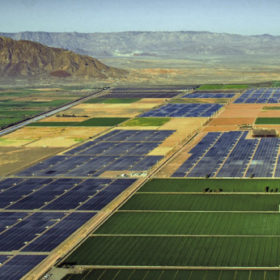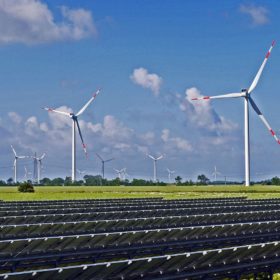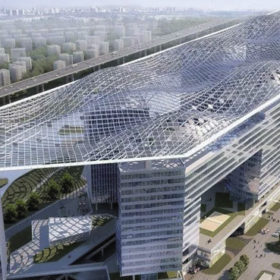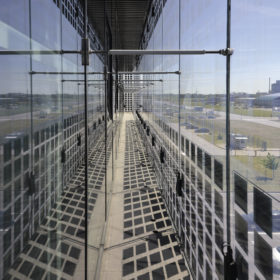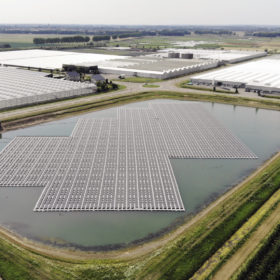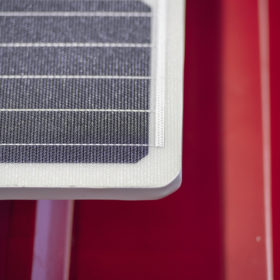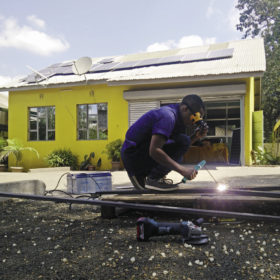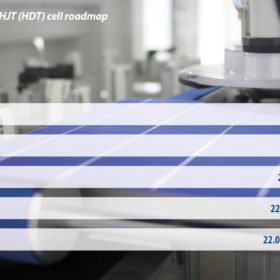Solar tsunami
There’s a lot of solar power to be built in the United States before the end of 2023, when the current “safe harbor” period for the 30% Investment Tax Credit ends. If you’re reading this in September 2019, you’ve got four years and three full months to build large scale solar power plants under the ITC. But don’t fret if you’re reading later on and are afraid that you’re missing out, there’s development gas in the tank yet.
Solar + wind, the benefits of co-location
Shared grid connections, complimentary resource availability, and more grid-friendly power are among the key advantages of pairing wind farms with solar arrays – and developers are quickly moving into the emerging space.
The return of BIPV
Since the beginning of 2019, many people within China’s PV industry have started to get the same feeling. Not about grid parity, or about mono replacing multi, but about something more unexpected. More and more people are speaking up at conferences and meetings about building-integrated PV (BIPV), which has been little more than a niche curiosity for years. Now BIPV, it seems, is making a big comeback in China.
Establishing a cost-effective BIPV sector in Europe
Why hasn’t more building-integrated PV (BIPV) been installed throughout the world? The simplest answer is that a PV module does not architecture make. The nature of the building process – its methods and logic – are key factors affecting technological transfer, as seen in the steel and concrete industries, which have been the basis of modern architecture for the past century. In many cases, standardization would go against the case-by-case approach to design and the interdisciplinary nature of the field. Solar architecture therefore involves a synergic concept of constructive and functional correctness, while always engaging an “aesthetic intentionality.” So how can the market segment continue to drive down costs?
Feathered friends turn foe
A floating PV array in the Netherlands has brought a community together while highlighting the value of module lever power electronics on water.
Sun King tackles age-old challenge
Rooftops that are unsuitable for conventional glass-backsheet PV modules present a clear opportunity, but the right solutions remain elusive. SunMan, under the leadership of an industry veteran – a man who is no stranger to revolutionizing PV – believes it has the answer.
A bump in the road for PAYG and self-sustainability
Two high-profile bankruptcies this year could serve as a warning for the potential pitfalls of the pay-as-you-go (PAYG) solar segment. However, Marcus Wiemann and David Lecoque of the Alliance for Rural Electrification say that PAYG business models can lead to long-term success, and they have a key role to play in providing power to the 1 billion people throughout the world who still live without electricity.
Grid security on the line
The move toward a digital, distributed energy system raises several questions for those managing grid infrastructure, and not least among these considerations is security. As the managing director of investment fund Energize Ventures, Amy Francetic oversees investments in technologies that will ensure reliability and security on the grid of the future. Here she discusses the current landscape for digitalization in the energy space, and how a recent bill passed by the United States Senate could potentially throw a spanner in the works.
Award window 3: SPI & REI
The third window of the 2019 pv magazine Award reveals competition heating up on the module front, as we head to Solar Power International and the Renewable Energy India Expo. Several different technologies are in the running, with transparent backsheets bringing a new dimension to bifacial PV, wafer sizes creeping upward and cast mono technology also making an appearance. The latest innovations in balance of systems, meanwhile, promise to push solar into new locations and bring down installation and labor costs. And the latest crop of inverters continues to earn their moniker as the “brains” of PV systems.
Next steps for HJT
There is movement in the heterojunction space, but will it be enough to surpass PERC’s momentum? New production lines show promise, but they might also be the last roll of the dice for Swiss production equipment supplier Meyer Burger.
